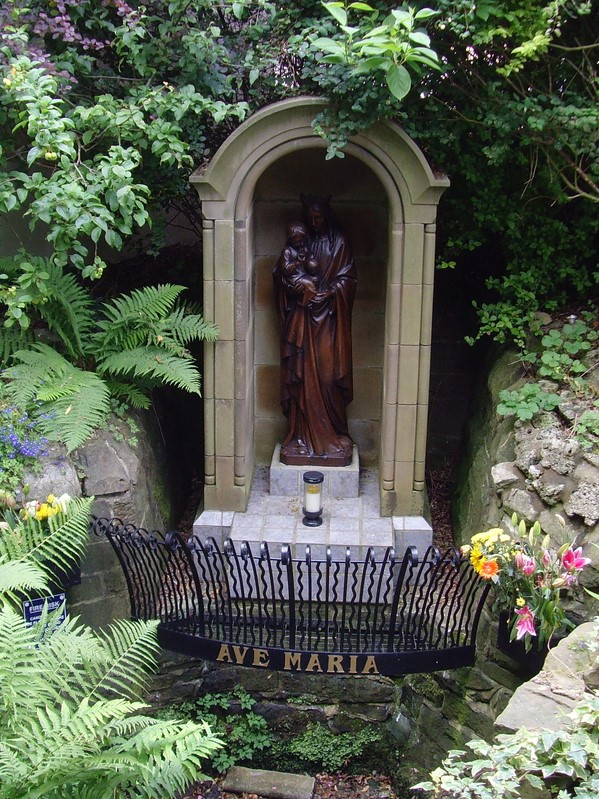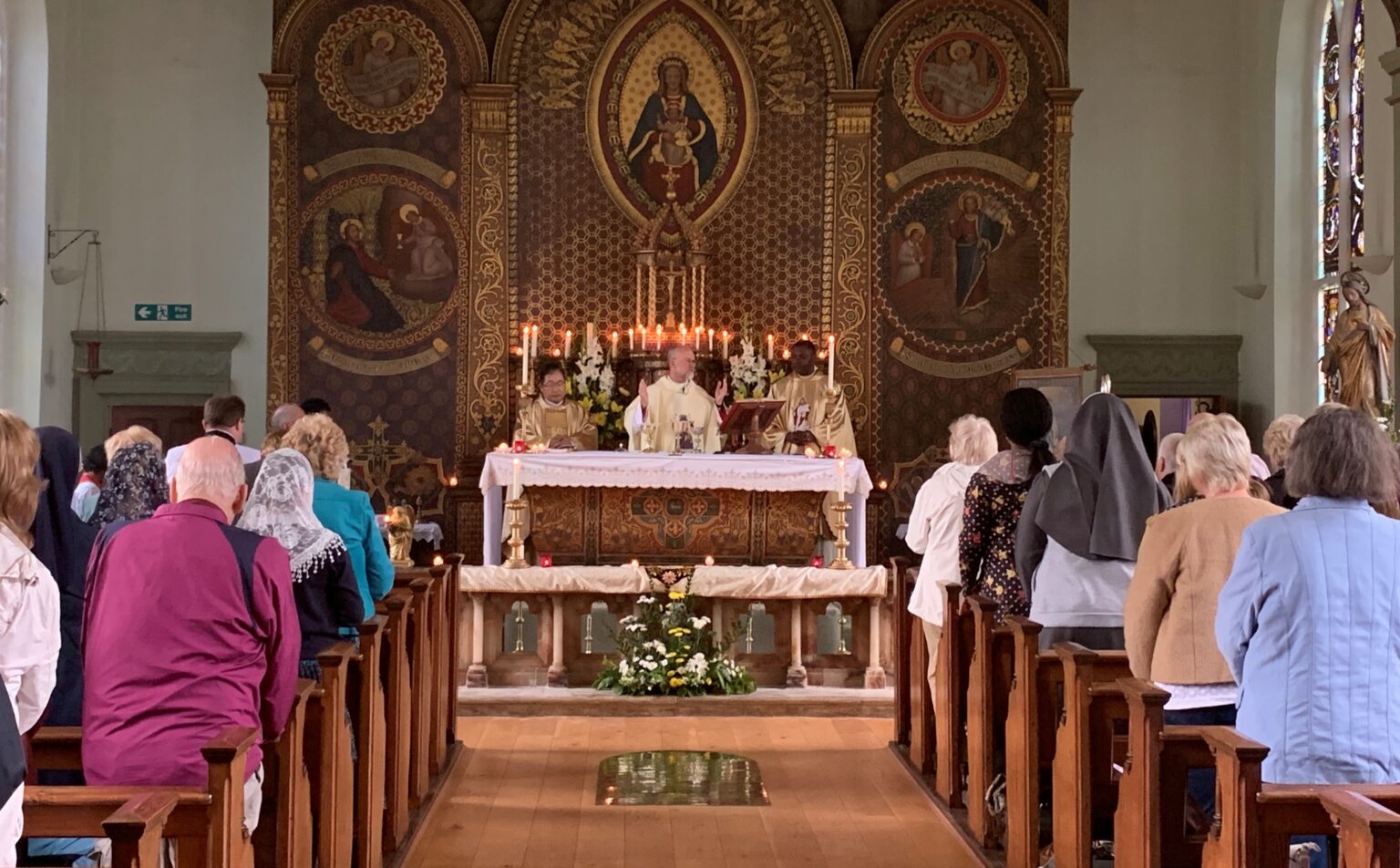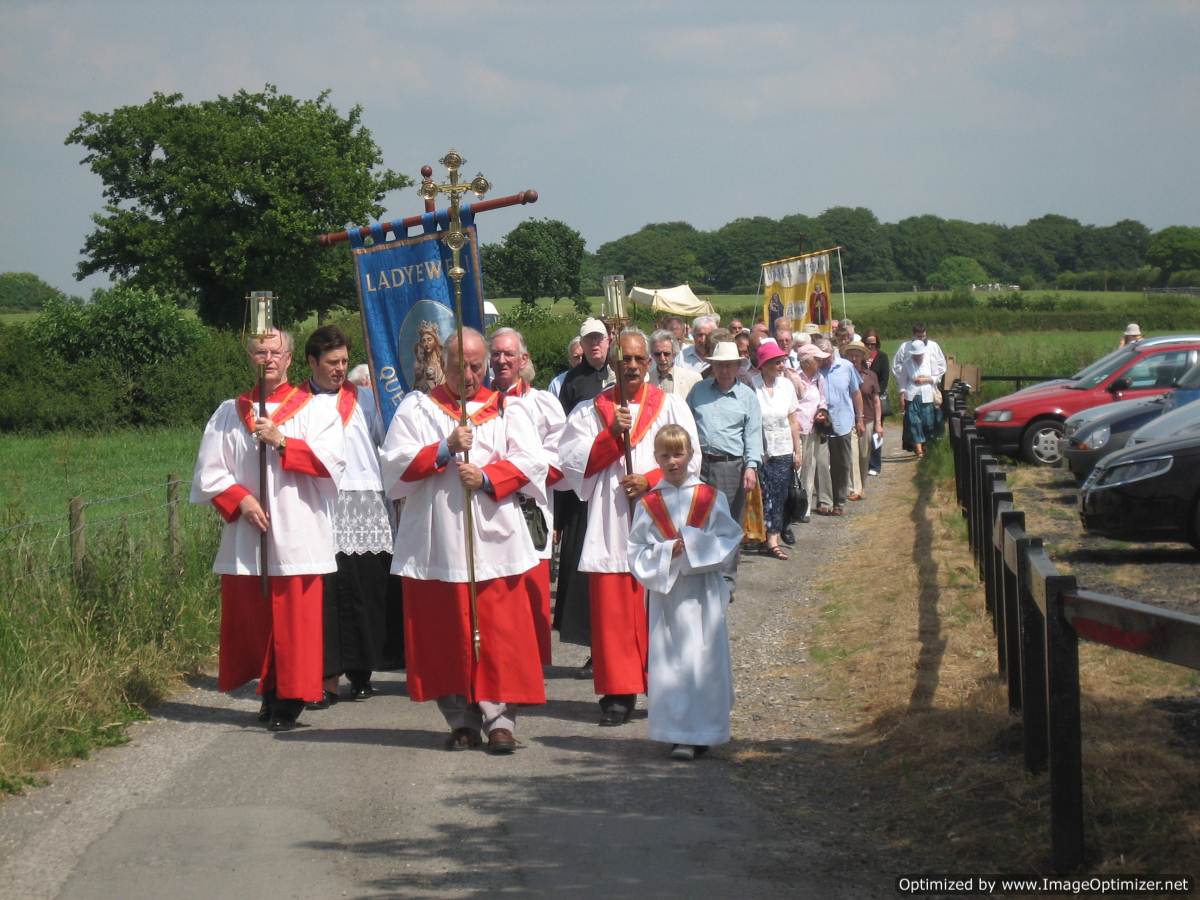Friday 1st February 2019
The CHC @ The Catholic Universe
A Lancashire tribute to Our Lady
Ladyewell has withstood persecutions, sackings, pillage and violence, and
stands today as an enduring example of a county’s loyalty to the faith
If you are planning to stay for a few days at the Christian Heritage Centre’s Theodore House at Stonyhurst College in Lancashire, you should aim to make a visit to the ancient shrine at Fernyhalgh, better known as Ladyewell.
Before your visit you might want to delve into two books which tell something of the story of Ladyewell – the Walsingham of the north.
In 1875, the Reverend T.E.Bridget compiled his classic book Our Lady’s Dowry; or how England gained and lost that Title, and in 1957 H. M. Gillett published Shrines of Our Lady in England and Wales. Both drew down on a tradition which is woven through centuries of Christian devotion in these islands.
Drawing on these sources we can construct some of the paths taken by the pilgrims of old and connect with a tradition that has always been part of the Christian life in Britain. People who have little understanding of why Catholics honour Mary often try to discount this tradition as something foreign or alien. Not only do they misrepresent Marian devotion but they misunderstand their own history.
In the 14th century Thomas Arundel, Archbishop of Canterbury, explained the devotion well. He wrote that ‘the contemplation of the great mystery of the Incarnation has drawn all Christian nations to venerate her from whom came the first beginnings of our redemption. But we English being the servants of her special inheritance and her own dowry, as we are commonly called, ought to surpass others in the fervour of our praises and devotions.’
All over Britain there were guilds and fraternities dedicated to Mary. These institutions reached back to
the earliest Saxon times, and were organised for the performance of works of charity and piety. On the great Marian feast days pilgrims
would gather, walk in procession, hear Mass and lay flowers. The most common devotion to Our Lady in Old England was to Mary’s joys but pilgrims would also meditate on her words, on her sadness and on her glory. Here are the origins of the ‘mysteries’ on which Catholics set their hearts, as they say the Rosary.
In the 13th century St Edmund said that she might apply to herself the words of the prophet: ‘Call me not beautiful, but rather call me bitter; for the Lord Almighty has filled me with bitterness and with great grief.’ (Ruth: 1.20) By the 15th century hymns and carols were regularly dedicated to Mary: ‘Mother and maiden was never none but she; Well might such a lady God’s mother be’. Another, the Alma Redemptoris Mater, draws on St Luke’s Gospel narrative of the angel Gabriel’s dramatic intervention in Mary’s life.
In the 16th century, sacred drama, intended to be represented on the afternoons of Good Friday and Holy Saturday, again recalled Simeon’s prophecy and places Mary standing at the foot of her Son’s cross. Typical of these are the Chester Plays, which include The Lamentation of Mary: ‘I pick out thorns by one and one, For now lieth dead my dear Son dear’.
While Bishop of Rochester, St John Fisher gave the funeral address following the death of Lady Margaret, Countess of Richmond (mother of Henry VII). In it he describes how this devout woman began her devotions at five in the morning, starting with the Matins of Our Lady, and continued thoughout the day to use the Office of Our Lady. After Fisher’s execution and the Reformation, secret devotion to Our Lady continued but the shrines and chapels were desecrated and despoiled. In Lancashire, the county which clung most tenaciously to the Catholic Faith, the devotion to Mary, and through her to her son Jesus, never failed.
Fr Christopher Tuttell was a missionary priest at Fernyhalgh – pronounced ‘ferny-huff’ – between 1699 and 1727 and wrote a personal account of its origins. The name comes from the Anglo-Saxon for ancient shrine and has been in use as a baptismal well since at least the seventh century.
Fr Tuttell wrote that in 1471 a wealthy merchant found himself in great distress during a passage on the Irish Sea. He ‘made a vow, in case he escaped danger, to acknowledge the favour of his preservation by some remarkable work of piety. ‘After this the storm began to cease and a favourable gale wafted the ship into the coast of Lancashire … a voice somewhat miraculous, yet providential, admonished him to seek a spot called Fernyhalgh and there to erect a chapel…’
Having found the spot he discovered a statue of the Virgin and erected a chapel. The spring became known as Lady Well, usually abbreviated to Ladyewell. An earlier chapel existed on this spot and the merchant may have discovered its remains. The chapel was pulled down during the suppression but Lancashire Catholics continued to throng there, shrine or no shrine. By 1685 a house of prayer was constructed next to the Holy Well, and made to look like an ordinary house. Cuthbert Hesketh of the Whitehill in Goosnargh bought the house at Fernyhalgh and paid the rent for the following 16 years. A Madam Westy was another benefactor, as was Bishop James Smith, first Vicar Apostolic of the Northern District, who died in 1711.
In 1687 Bishop Leyburn confirmed more than a thousand people at Fernyhalgh but the authorities did not always turn a blind eye. As late as the 18th century soldiers were sent to plunder the chapel, although they stopped short of destroying it. On one occasion, in 1718, a renegade priest, a Mr Hitchmough, led 20 soldiers to Fernyhalgh to plunder and strip it. By 1723 prayers began to be offered at the shrine.
Fernyhalgh’s sufferings were still not over. In 1745, as Prince Charles and his Highlanders pushed south to Manchester, during the second Jacobite Rising, a hostile mob attacked the Lady Well chapel, sacked and burned it. Another priest, also by the name of Tuttell, rebuilt the chapel and as numbers increased they began work on a new church, which was opened in 1794. Built to escape notice from the outside, the cruciform shape and interior design leave today’s pilgrim in no doubt that this church, built 35 years be- fore Emancipation and 14 years after the Gordon Riots, represented a statement of enduring faith. It has continued since then to draw pilgrims who continue to give thanks from being spared the shipwrecks which threaten every life.
Even in our own times, on the feast of the birthday of the Virgin Mary, on September 8th 2000, the shrine was desecrated. An effigy of Blessed Padre Pio, brought from Rome by a Liverpudlian family, was ripped from its base and a chapel was daubed with blue paint. A priest at the shrine, Fr Benedict Rucsilo, described the attack as “sickening.” The attack came after five churches in the same part of Lancashire had been torched by an arsonist.
Endurance is summed up by one other aspect of Fernyhalgh. Here, too, is the tombstone of the last of the English Carthusians of the old traditions. It reads: ‘Sacred to the memory of the Reverend James Finch, the last of the English Carthusian Monks. He died March 3rd, 1621, aged 72. Good Christian, on this Stone, shed not a tear for virtue lies entombed, enshrouded here. Religion, resignation both combine over these remains to raise a heavenly Shrine. R.I.P.’
Mary is venerated at Fernyhalgh as Our Lady Queen of Martyrs. The statue depicting the Virgin holding her son was brought to Fernyhalgh from Bolzano by the sisters of the Holy Child of Jesus after the restoration of the English and Welsh Hierarchy. Beside the shrine is a prayer room called Stella Maris, built in 1996 in the shape of a ship. Nearby is the Martyrs Chapel, a modern building, beautifully simple, housing statues of Saints Thomas More and John Fisher. Around the walls are the names of more than 300 Catholics from these islands who gave their lives for their faith.
Approaching Fernyhalgh, along Fernyhalgh Lane, today’s pilgrim passes St Mary’s Church and school, which is where Adam Butler, who wrote the famous Lives of the Saints, was educated. There is a quiet Lancashire lane, wooded embankments, and a reminder, in the distance, of the M6 and the cares of this world as well as the next. In May you will see the timeless processions of pilgrims from the Lancaster Diocese.
It is possible to leave a car by St Mary’s or further along the Lane at a small car park. Next to the shrine is Ladeywell House. Upstairs there is a reliquary which is home to the Burgess Altar, and which folds away as a sideboard. This was the secret altar on which many of the martyrs, including St Edmund Campion, St Edmund Arrowsmith and Blessed John Woodcock, celebrated Mass There is also a display of the vestments which were used by many of the priests before their arrest and execution. Here too is part of the skull of St.Thomas a Becket, murdered in 1170 in Canterbury Cathedral, and taken to Castelfiorentino in Tuscany during the desecration of the shrines by Henry VIII.
Ladyewell House has been developed as a pilgrimage centre, with seats, an outside altar and Rosary Way. In a modern chapel each of the names of the Catholic martyrs is inscribed on a roll call, the names themselves a reminder that the same faith was once held by all the people of these islands. Like the ancient pilgrims who recited the Jesus Psalter and had a great love of the Virgin, today’s pilgrims will find peace here.
There is no doubting that this is hallowed ground.



